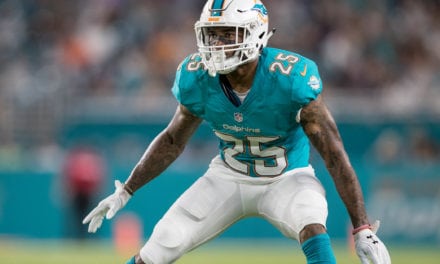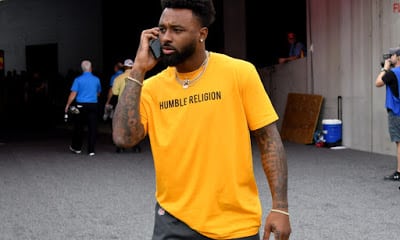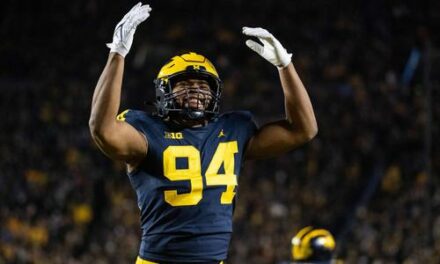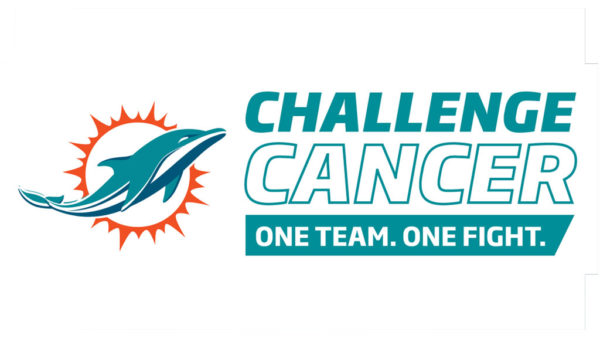
In Week 11 of the 1972 NFL season, the traveling circus that was ABC’s Monday Night Football arrived in Miami. Frank Gifford, Dandy Don Meredith, and Howard Cosell, with police protection in tow, arrived at the Orange Bowl to bring the nation their only prime-time look at the 1972 Dolphins.
If you are younger than, say, 45 years of age, it would be hard for you to appreciate just how big a deal Monday Night football was at that time. This was only the third season a television network had ever carried a series of prime-time games. There had been occasional night games back in the 1950’s and 60’s, but never a regular series of games broadcast in prime time.
Amazingly enough, ABC landed the package basically by default. There were only three networks at the time; CBS, the top dog, called the “Tiffany network” by some; NBC, and ABC. The American Broadcasting Company was bringing up the rear in ratings as it had always done since its founding in 1948, well after the other two networks were established in the early days of television.
It was their dismal standing in the television marketplace that motivated ABC to take a chance on an unproven concept-weekly prime-time NFL football. The other two networks had turned down the idea flat. CBS did not want to tamper with its winning Monday lineup, anchored by Gunsmoke, Here’s Lucy, and the Doris Day Show. NBC preferred to keep its “Monday Night at the Movies” locked in following Rowan & Martin’s Laugh-In.
Cleveland Browns owner Art Modell led the negotiations for the package, getting ABC to start out paying $8.5 million per year. The president of ABC Sports, Roone Arledge, wanted to turn those broadcasts into an event.
He was wildly successful.
Starting with the debut broadcast on September 21, 1970, in Cleveland, where Browns fans set an all-time attendance record of over 85,000 to watch Joe Namath and the Jets, there was a gravitas to Monday Night Football that separated it from any other sports broadcast at the time.
I was just growing into adolescence then, and I could feel my pulse quicken when I turned the black-and-white portable TV in my bedroom to our ABC station promptly at 9 PM eastern time on Monday and hear the theme song playing. It was trumpeting a happening, an event. I was one of an average 35 million viewers on any given Monday night in the early years. Those are inconceivable numbers today with the multitude of viewing options available but just enough to crack the top 20 in the Nielsen ratings, then-still behind Gunsmoke.
Right in the middle of it, some even thought the very heart of the event, was Howard Cosell. He was a long-time sports reporter, first in newspapers, then radio in New York, then national radio. He seized the moment, finally receiving the attention he had long sought and felt he was deserving of. His personal gravitas fit perfectly with what Roone Arledge wanted, and he became a national phenomenon.
As producer Chet Forte told the Miami Herald, “There’s no middle ground on Howard. You love him or you hate him…but most important, you watch him.” This was a concept new to sports broadcasting in the 1970’s, and it obviously grew deep roots.
It was not Cosell’s “tell it like it is” style that brought the need for a police escort into the Orange Bowl that night in 1972 and left guards posted outside the broadcast booth. It was something Cosell did not say, at least not often enough for Dolphins fans.
One of the major attractions of Monday Night Football was the “Halftime Highlights” package that would be shown during halftime, oddly enough, every week that was narrated by Cosell. This would seem primitive to today’s viewer, but in the 1970’s those were THE highlights fans got to see of out-of-town games. There was time allotted for five games every week out of the twelve that were played.
Dolphins fans were incensed that the team with the perfect record was not being featured regularly, and some called and mailed threats to Cosell. He explained to the Herald why he had contacted the FBI regarding these threats, again fairly common now but not so then. “It’s been documented that there are some nuts around,” he said, his ego in full bloom, “look what happened to the Kennedys and Martin Luther King and George Wallace.”
It turns out that Cosell had nothing to do with which games’ highlights were shown. They were chosen by the ABC producers in coordination with NFL Films, a point Cosell wisely made at every opportunity.
This was the Dolphins’ one and only appearance on Monday Night Football in 1972, something else hard to understand in light of today’s practices. When the package started, it was actually quite simple-each team made one appearance. There were 26 teams, which worked out to 13 games. It was a 14-week season, but there was no Monday night game in Week 14. This rule would change for the 1973 season when the Dolphins played twice on Monday night.
Miami welcomed the woebegone St. Louis Cardinals to this festive atmosphere in the Orange Bowl, packed with 80,010 fans ready for their team’s closeup. The Cardinals had not won in their last six games, managing only a 6-6 tie with the equally lowly Eagles. Two years ago, however, they had throttled the Cowboys 38-0 in a game that had thoroughly disgusted broadcaster, Don Meredith, only two years removed at the time from being the Dallas quarterback. St. Louis was hoping for more Monday night magic.
The only magic they packed with them, however, was the ability to make the football disappear and reappear in a Dolphins player’s hands. The Cardinals committed six turnovers on their way to a 31-10 drubbing. The game was a mess.
Larry Csonka led the way to another 200-yard rushing performance by Miami, gaining 114 of them in only 16 carries. Earl Morrall had one of his better passing games of the season, completing 12 of 19 for 210 yards with two touchdowns and no interceptions.
The star of the game, though, was wide receiver, Otto Stowe. Starting his second game in place of Paul Warfield, still recovering from an ankle injury against the Jets, Stowe had the game of his life. He caught six passes for 140 yards and two touchdowns, 37 and 27 yards. He was awarded the game ball afterward for the first and only time in his career. Stowe would finish the season, his second in the NFL, with 13 catches and an average of 21.2 yards per catch. He would play in Dallas in 1973 and record 23 more catches, add two in Denver in 1974, then be out of the league for good.
The Dolphins were now 3-0 on Monday night. That streak would grow to seven, ending on the opening Monday night of the 1975 season against Oakland, the team that dominated Monday Night Football for its first two decades.
Miami’s historical record moved to .500 for the first time, standing at 46-46-3 since its inception in 1966. They were 15-39-2 under original coach George Wilson and 31-7-1 under Don Shula after the Cardinals game. I suppose coaching really does make a difference.
The Dolphins were now 11-0, only the third time an NFL team had accomplished that feat. The previous two, the 1942 Chicago Bears and the 1969 Los Angeles Rams, did not finish their seasons undefeated, then lost in the playoffs.
The head coach of that Rams team, George Allen, was now the head coach of the Washington Redskins. During the Dolphins-Cardinals broadcast, Howard Cosell had opined, “I think Don Shula could be one of the best three coaches in the game since World War II, along with George Allen and Vince Lombardi.”
Within a few weeks, Allen and Shula would be forever linked, although hardly on equal footing.
Coming Next: Part 19 – Breaking New Ground
The Dolphins became the first team to start 12-0 by pounding the New England Patriots again. Earl Morrall continued his excellent play while Bob Griese was on the mend and nearing a return to action.
You can follow me on Twitter @jimjfootball













